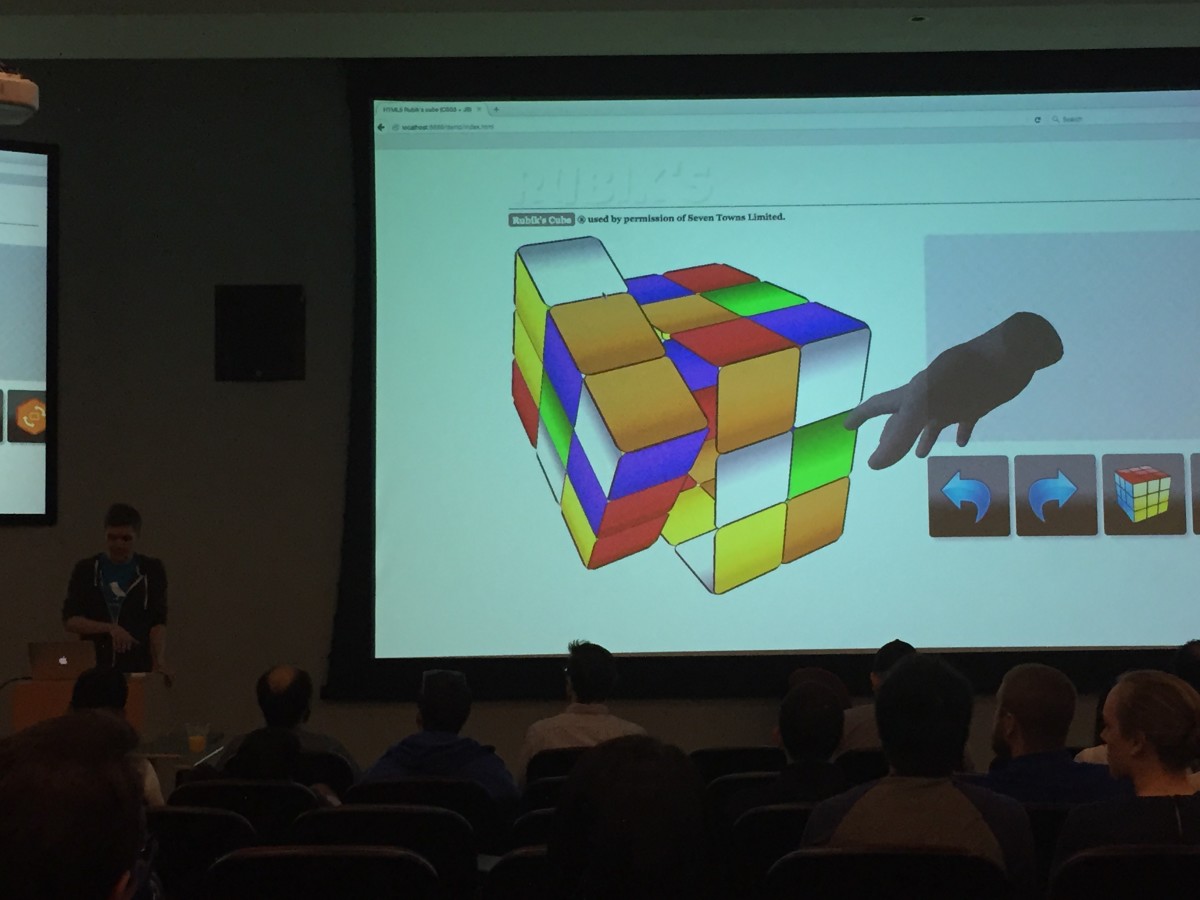There was music, gesturing and, since this is 2015, disclaimers amid the crowd at Johns Hopkins’ twice-a-year student hackathon this weekend.
HopHacks returned for the fall semester to get students to spend a weekend tinkering, and help Major League Hacking kick off its new season. In all, 37 teams came out to the university’s Homewood campus for the event. The 220-ish participants had a chance to use a Myo armband to bring gestures onscreen, as well as dig into data sets like the city’s Open Baltimore.
We checked out all of the demos on Sunday morning, and picked out 10 that were both representative of the projects on display, and flagged by judges as the best in various categories.
1. Baltimore Tax Credit Map
Bmore Mapped creator Ryan J. Smith and Geoffery Newman created a map from OpenBaltimore data to find out how many Baltimoreans are taking advantage of Maryland’s homeowners tax credit. The answer is: not many. The duo found that less than 6 percent of homeowners are taking advantage the tax credit. They said showing all of the properties on a map is a place to easily tell people if they are eligible, and generally get the word out about the tax credit.
The judges were very impressed. Smith and Newman took home the top prize of $1,024, and a pair of sponsor prizes.
“You need to launch this thing,” said Social Toaster CEO Brian Razzaque, who was a judge at the event.
2. Morse Code Myo
This project uses a wearable to speak. The team of Elaine Wong, Bilal Sadik and Elena House-Hay optimized the gesture-controlling device for morse code. Wave in for dot, wave out for dash. When Wong typed out “hello” during the group’s demo her fellow hackers gasped in amazement. The judges also loved it, awarding the team second place.
3. BuellerBoard
If there was a people’s choice, this was probably it. David Samson, Paul Watson and company created a keyboard that can take any sound, and translate the extrapolate the pitch into a full keyboard. For the demo, they chose a goat sound.
A waltz followed:
https://youtu.be/HLVcFf3wl4U
4. sk3tcheD
Physics homework was the inspiration for this project from Achintya Gopal. Drawing in 2D left the student feeling flat. So he used Leap Motion and created a way to bring objects to life using one’s own hands. If he were to stay with the project, Gopal said he would incorporate Oculus Rift as a next step.
5. Squatting
Another crowd favorite, this project from Barbara Kim, Lucy Han and Brian Gu sought to show people the best vacant Baltimore houses where they could potentially squat for a night. The team used OpenBaltimore data to identify and map vacant properties, then overlayed crime hotspot data. The idea, they said, is to help the homeless. However, Gu was adamant that the team does not condone squatting.
6. Glissando
Another music entry, this project from Akshay Srivatsan, Corby Rosset and Max Yeo takes about 400 dusty old chorales written by Johann Sebastian Bach and makes them new again.
Using machine learning, Glissando creates computer-generated music by reworking what it’s learned from the dataset. Music theory students can attest to all of the rules that Bach wrote in the act of writing those chorales, so thinking about them as a dataset doesn’t seem like a huge leap. The team ran into some issues making melodies sound natural, but were ultimately able to generate a sample that sounded pretty good to our ears.
7. Leap Cube
“I have 1 minute 45 seconds to solve a Rubik’s Cube,” Michael Norris said. With that, he used Leap Motion to spin the sections of a computer-generated Rubik’s Cube. Norris didn’t solve the puzzle on the screen, but he did get the gestures working.
8. Lumiere
Every hackathon need a good consumer-facing app, and you know a hackathon with college kids is going to need a dating app. Lumiere fit the bill.
Since the market to introduce people to each other has plenty of players, this app is for those In a Relationship. The team of Rahul Tiwari and Emily Kilen want to make sure you treat your significant other right, so they created ways to make sure that you don’t forget special occasions, and combine your preferences to see where the best date spots will be. Yes, there is swiping. The team is also adept on emotional needs when it comes to pitching. The choice to make Jennifer Lawrence a sample profile clearly shows they understood their audience.







